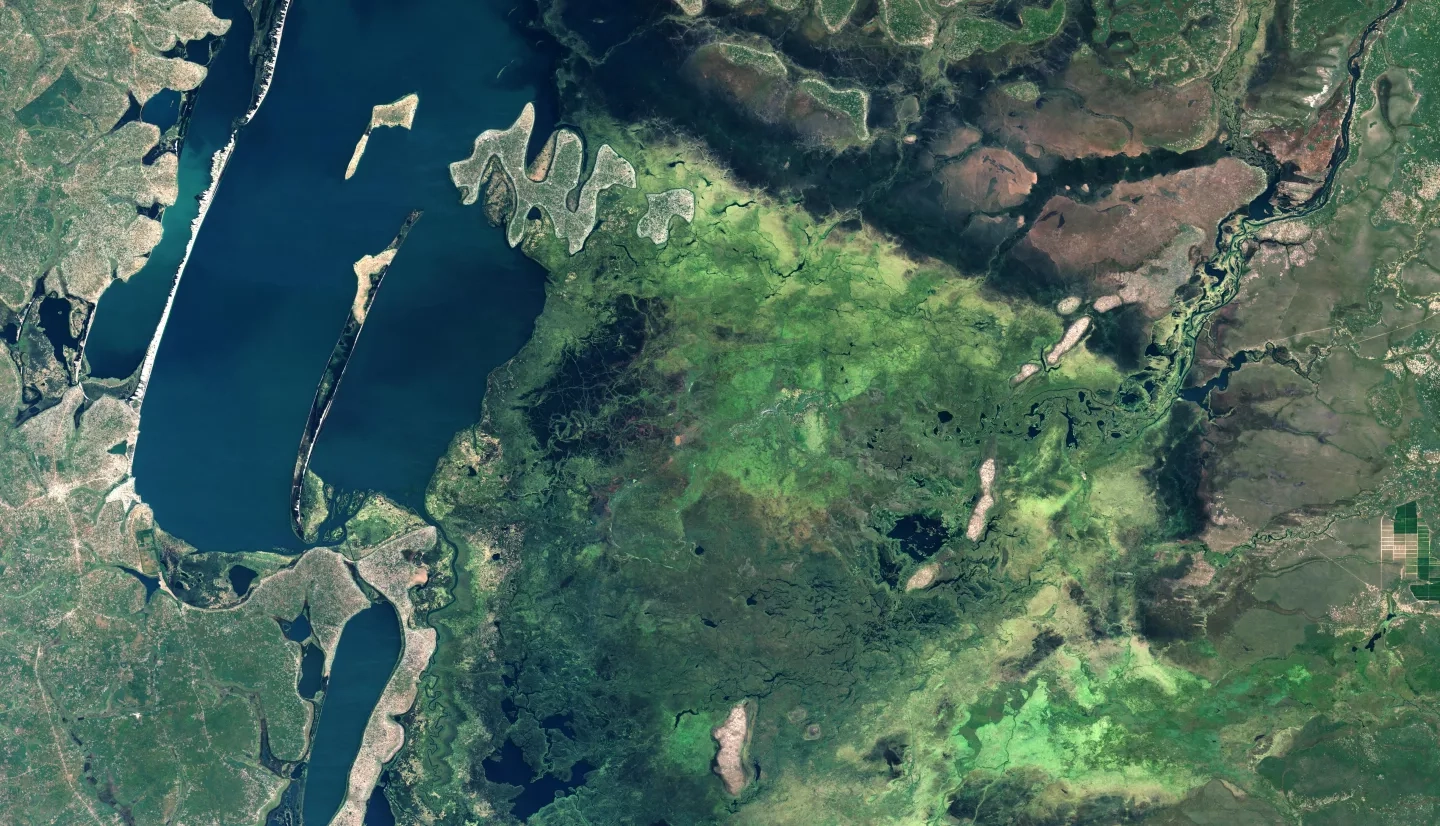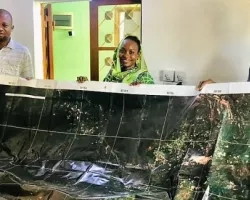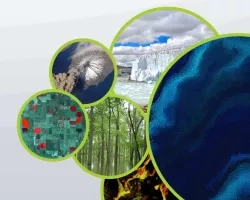Earth science knowledge enables applications of satellite and other data on topics from sustainable development to climate change to disaster risk reduction – that’s the focus of a new book edited by Argyro Kavvada of the Applied Sciences Program.
Titled “Earth Observation Applications and Global Policy Frameworks,” the American Geophysical Union (AGU) published the book as part of their Geophysical Monograph Series.
“This book invites you to explore current capabilities and challenges, as well as new opportunities, in applying Earth science knowledge and insights to advance sustainable development, disaster risk reduction, and climate action,” said Yana Gevorgyan, Director of Secretariat of the Group on Earth Observations (GEO). It is a global network of over 100 government, non-profit, research centers and other organizations that focus on solutions to global challenges like sustainable development.
“It aims to serve as a valuable resource for a variety of readers including those engaged in the three global policy agendas, as well as decision-makers and practitioners in local and national governments,” Gevorgyan noted in the book’s preface.
Kavvada said the book is the result of collaborations between GEO, NASA, and other federal agencies, as well as international partners, stakeholders, and data users from different Earth science disciplines, all coming together to share knowledge
“Data and insights from Earth observations are critical for addressing societal challenges from the local to global scale,” said Kavvada, lead editor and manager of the Applied Sciences’ Sustainable Development Goals initiative.
“We assembled a broad range of case studies from local, national, regional, and international initiatives that showcase how insights from Earth observations serve society,” Kavvada said. “In doing so, we hope to stimulate discussion among the global Earth science community and collaborators about new opportunities to enable long-term use of Earth science applications and sustained impact to stakeholders across regions.”
According to Kavvada, collaboration across disciplines is vital to making the most of the large volume of complex Earth science information, a theme that is woven throughout the book with specific examples. This is exemplified by initiatives from GEO such as the Earth Observations for Sustainable Development Goals (EO4SDG) initiative, highlighted in the book. Such initiatives provide an effective framework for bringing key actors together to improve the enabling environment that broadens the use of Earth observations to inform decisions and actions.
This sentiment is shared by Lawrence Friedl, director of Applied Sciences, who also served as an editor for the book.
“It was thrilling to work directly with so many passionate people with a range of expertise in Earth science,” Friedl said. “It was an honor to contribute to this book, but even more so, it was a tremendous learning opportunity to hear from new and diverse perspectives.”
Kavvada added the book highlights resources for decision makers and practitioners in local, state, and national governments, as well as internationally coordinated initiatives that are driving progress on three landmark United Nations agreements.
It also illustrates the importance of open collaboration among government, private, and nonprofit sectors, she said. The book shares a number of case studies of projects that demonstrate impacts of Earth observations across domains as diverse as wetland preservation, food security, drought and water quality, disasters, land degradation, urbanization, climate change, and greenhouse gas monitoring.
More information can be found at at the AGU website feature Editor's Vox.





